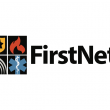The ultimate vision
Such analysis of available technologies and business models will give FirstNet the edge it needs to revolutionize public-safety communications. The technologies available today have much better capabilities and provide an opportunity to exploit best-of-breed solutions for specific operational needs. Public safety is not accustomed to defining operational needs and has been forced for many decades to accept limited capabilities of devices and systems developed for a mass-sale opportunity, as opposed to specific user needs.
With the endless equipment, devices and applications being developed every day, public safety now can demand the specific architecture and systems capabilities it wants, based on actual user needs in a specific region of the country. With the development of an entire system that leverages public-safety LTE, different business models can be explored for agency use, regional use and national use (see Figure 2).
Sharing the public-safety LTE network—during non-emergency periods that generally dominate the system use on a daily basis—may be possible to generate revenue. Properly structured sharing arrangements could provide added capability for the public in areas where broadband services do not exist, but public safety would retain priority during emergency situations.
FirstNet can evaluate and select the capabilities and standards for devices and applications on the system, should it wisely choose to take advantage of pilot projects — such as those already funded by federal BTOP grants — that could provide much-needed visibility into LTE’s impact on real-world public-safety operations, and help to define the capabilities of the FirstNet network. Further, the early availability of these capabilities could provide a glimpse of the ultimate vision.
Again, by utilizing the latest commercial standards, economies of scale can be realized to reduce the cost of devices and to take advantage of the commercial demand for smartphones, now and into the future. Public safety sorely needs to leverage the innovation that is happening today in commercial mobile broadband to achieve specific technology improvements for police, fire and EMS.
Meanwhile, NIST’s Public Safety Communications Research laboratory in Boulder, Colo., in addition to other independent labs, could be used to test capabilities, as well as the compatibility of systems with existing commercial standards. Once a process is developed, public safety then will be able to decide which models it prefers and in what regions, based on regional operation capabilities.
As the analysis progresses, the pilot projects will begin clarifying the standards that FirstNet will choose for the revolution to LTE as the standalone system for public safety.
As previously mentioned, today’s communications systems typically are bought and maintained by a local agency, thereby maintaining local control. In some instances, several agencies have banded together to form a regional system, usually defined by a formal agreement. A formal process for regional systems can be outlined by FirstNet to maintain the balance between local control and shared resources for the benefit of the entire public-safety community, as well as the taxpayers that fund the systems.
As this model is extended to the NPSBN, a fully open, standards-based model can be maintained that allows the proper balance of local functionality, regional coordination and national resource sharing. Such an approach also would allow the use of current public-safety real-estate assets when deploying new LTE sites, thereby drastically reducing the capital required to deploy the NPSBN, and reducing long-term operating costs by avoiding the leasing costs prevalent in the commercial models.
The exponential benefits of achieving this balance cannot be predicted, just as the explosion of capabilities that commercial wireless technologies have enabled could not be predicted several years ago. However, it must be a prime responsibility for FirstNet to begin a true revolution for LTE in public safety.
Michael J. Bostic is the director of customer advocacy for Raytheon’s public-safety and security unit.










